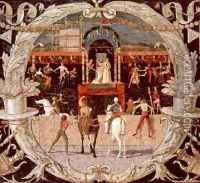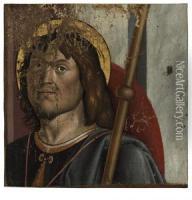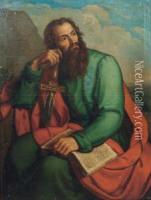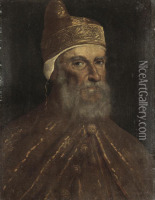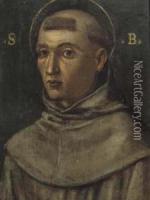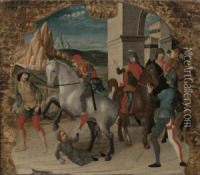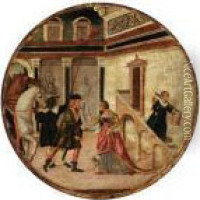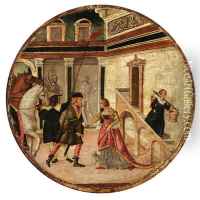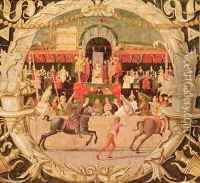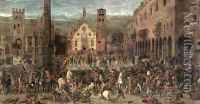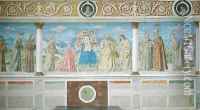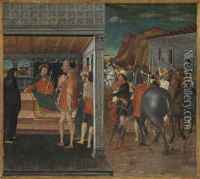Domenico Morone Paintings
Domenico Morone was an Italian painter of the Renaissance period, active mainly in Verona. Born in 1442, Morone is recognized for his contributions to the Veronese school of painting, which was characterized by vibrant colors and a focus on architectural perspectives.
Not much is known about Morone's early life, but it is believed that he was influenced by the works of Mantegna and other artists of the Paduan school. Morone’s style is often described as narrative and expressive, with a particular talent for depicting lively street scenes and festivals.
One of his most famous works is the fresco cycle depicting the 'Expulsion of the Bonacolsi' in the Sala del Consiglio of the Palazzo della Ragione in Mantua, a commission he received in 1494. This work exhibits his skill in illustrating dynamic crowd scenes with a sense of movement and excitement.
Morone's other notable works include 'The Chess Game' (c. 1500), which is celebrated for its intricate detail and use of perspective, and frescoes in the church of Santa Maria in Organo in Verona, showcasing his religious compositions.
Domenico Morone's legacy continued through his son, Francesco Morone, who was also a painter and is often credited with completing some of his father's works after his death. Francesco was an influential artist in his own right and helped to perpetuate the stylistic traditions of the Veronese school into the 16th century.
Domenico Morone passed away in 1518. Despite not being as widely renowned as some of his contemporaries, Morone's work remains an important example of the transitional period in Italian Renaissance art, bridging the gap between the early and high Renaissance with his unique blend of narrative flair and attention to detail.
